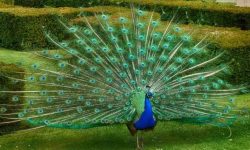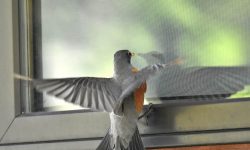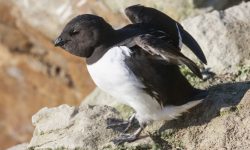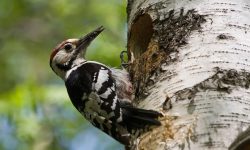Owls have captured human imagination for centuries. Their calls echoing through forests and open fields create a sense of mystery that few other birds inspire. One of the most intriguing aspects of owl behavior is their hooting. These nighttime calls are so distinctive that they have become deeply woven into folklore, storytelling, and cultural symbolism around the world.
Although hooting sounds eerie to many people, it serves important biological purposes. Every hoot carries information, whether it is about territory, mating, location, or communication between family members. To understand why owls hoot at night, it is important to look at how these birds live, how they hunt, and how they interact with each other in the darkness.
This article explores everything behind an owl’s nighttime calls. You will discover why they vocalize after sunset, what different hoots mean, how owls use sound to survive, and why these calls remain one of nature’s most fascinating forms of communication.
Understanding Owl Communication

Hooting as a primary vocal behavior
Owls communicate largely through vocalizations. Hooting is one of the main sounds associated with these birds, but it is only one part of a wide vocal range. Each species has its own distinctive calls. Some produce long, resonant hoots, while others use whistles, barks, trills, or screeches to convey information. These sounds help owls navigate their complex nighttime environment.
Since owls are nocturnal, hooting becomes their primary method of communication. Unlike songbirds that use visual displays and daylight singing, owls depend on sound that carries well through nighttime air. Hoots travel long distances, allowing individuals to locate mates, warn rivals, or maintain contact with family members.
The structure of a hoot is designed to travel far. Low-frequency sounds move through forests and open landscapes without being easily disrupted. This makes hooting one of the most efficient forms of nocturnal communication in the animal world.
How owls produce their calls
An owl’s hoot is created by air moving through specialized vocal organs. The syrinx, located at the base of the trachea, allows owls to produce deep, resonant sounds. Owls have larger and more powerful muscles around the syrinx than many other birds. This gives them the ability to create long, steady notes that carry across landscapes.
Different owl species use different vocal patterns. Great horned owls produce deep, five-note hoots. Barred owls create a rising and falling pattern that sounds like a question. Barn owls screech rather than hoot. These variations help each species communicate without confusion.
Even young owls begin learning their species’ vocal patterns early. As they grow, their calls become clearer and stronger until they can fully participate in adult communication.
Why nighttime enhances owl communication
Owls hoot at night because their vocal signals travel farther and more clearly in cooler, calmer air. During the day, heat and rising air currents scatter sound waves. At night, lower temperatures and stable air allow hoots to move smoothly across forests and fields.
Darkness also reduces visual cues, making sound more important. Owls cannot rely on sight to find each other easily, especially in dense forests. Hooting becomes a reliable tool for locating mates or young. The quiet nighttime environment reduces noise from other animals, increasing the effectiveness of these vocal signals.
As a result, hooting becomes most active during dusk, night, and early morning.
Why Owls Hoot at Night
Establishing territory
One of the most important reasons owls hoot is to establish and defend territory. Owls are highly territorial birds. Each individual or pair occupies a large hunting area. Hooting warns other owls to stay away. These vocal boundaries help reduce conflict and maintain stability within owl populations.
Territory hoots are often loud, steady, and repeated. A male owl may hoot from specific perches that mark the edges of its territory. These locations are chosen carefully. Tall branches, cliffs, or exposed trees allow hoots to travel farther.
When another owl enters the territory, the resident owl increases its hooting. This back-and-forth communication helps determine dominance without physical confrontation. In most cases, vocal displays settle disputes before aggression becomes necessary.
Territorial hooting intensifies before breeding season. At this time of year, males focus on advertising their presence and attracting potential mates. The nighttime landscape becomes a chorus of calls as owls communicate boundaries and intentions.
Finding and attracting mates
Hooting plays a central role in owl courtship. Male owls begin vocalizing more often as breeding season approaches. Their hoots convey information such as age, strength, territory quality, and readiness to mate. Females listen for these cues and respond when interested.
During courtship, pairs may hoot back and forth in duet-like patterns. These exchanges help build pair bonds before nesting begins. They also signal commitment and compatibility between the two individuals.
Once a pair forms, hooting continues to maintain communication. Owls rely on coordinated effort to raise chicks, and vocal exchanges help them stay in contact. The female may call from the nest while the male delivers food. These calls ensure that both parents remain aware of each other’s locations and actions.
In many owl species, mating pairs remain together for multiple years. Hooting strengthens these long-term bonds and helps maintain coordination even outside the breeding season.
Locating family members
Owls hoot to communicate with partners and offspring. Adult pairs stay in contact through soft hoots or calls, especially when hunting separately at night. This communication prevents them from wandering too far apart and helps them maintain awareness of each other’s positions across large territories.
Young owls also rely heavily on sound. After fledging, juvenile owls leave the nest but remain dependent on their parents for food. They produce begging calls that help adults locate them. These vocalizations often occur at dusk when the young wait for the first meal of the evening. The parents respond with their own calls to guide the fledglings.
As the young mature, their calls become stronger and more defined. Communication plays an essential role in keeping owl families together until the next breeding season begins.
Warning of danger
Owls use vocalizations to signal danger. When threatened by predators such as hawks, eagles, or larger owls, they may emit sharp warning calls. These sounds alert chicks, mates, or nearby owls to potential risks.
Many owl species produce a series of barks or high-pitched yelps when disturbed. These sounds differ from hoots and serve as alarm signals. In areas where humans are present, owls may use alarm calls to warn their family of possible disturbance.
Because owls are nocturnal hunters, nighttime warnings allow them to coordinate and avoid conflict or predation under low visibility conditions.
How Owls Use Hooting in Hunting and Survival
Hooting to declare presence in hunting zones
Owls rely on large territories filled with prey. They hoot to announce their presence within these zones. This reduces competition by informing other owls that the area is already claimed. Since hunting success depends on silent flight and surprise, loud hooting is a strategic behavior performed before or after feeding, not during hunts.
By hooting before hunting, an owl prevents conflicts with neighbors who might also search for prey in the same area. This vocal boundary system helps each owl maintain access to food without constant confrontation.
Nighttime hooting also helps owl species with overlapping territories avoid accidental encounters. These vocal signals maintain order in the dark, helping each bird stay within its own hunting range.
Using silence and sound together
Although owls hoot frequently, they rely on silence while hunting. Their feathers are specially adapted to produce silent flight. They can glide or maneuver through trees without a sound. This gives them an advantage over prey such as mice, voles, and rabbits, which detect predators through sound.
Hooting occurs between hunting intervals or after an owl returns to a perch. This balance between silence and sound is one of the most remarkable aspects of owl behavior. Their ability to shift between loud communication and silent predation allows them to survive in both social and solitary moments.
Echolocation-like benefits of hooting
Owls do not use echolocation like bats. However, hoots still give them valuable information about their surroundings. Large trees, cliffs, and open landscapes reflect sound in different ways. Owls may interpret these echoes to assess territory features or identify suitable perches.
The ability to process acoustic information enhances their navigation at night. It also helps them understand changes within their habitat, such as the presence of new obstacles or disturbances.
Nighttime hooting therefore serves multiple roles beyond communication. It integrates with a broader sensory system that helps owls adapt to their environment.
Types of Owl Hoots and What They Mean
Classic territorial hoots
The well-known “hoo-hoo-hoo” pattern heard in forests often belongs to large species like the great horned owl or Eurasian eagle owl. These territorial hoots are calm, low, and repetitive. They spread far through the trees and signal dominance and presence.
These hoots are usually delivered from high perches at dusk or dawn. Males tend to produce deeper hoots than females, allowing individuals to distinguish between sexes. When two owls hoot back and forth, they are usually defining territorial boundaries.
Territorial hoots are among the longest and most carefully structured vocalizations owls produce. Their clarity and depth help them remain distinguishable across long distances.
Courtship and pair-bonding calls
Courtship hoots are softer and more rhythmic. They can sound like gentle coos or repeated notes that blend smoothly with nighttime sounds. These calls help males and females establish trust and synchronize breeding behavior.
In many species, courtship calls become more frequent as spring approaches. Males use them to entice females to explore nesting areas. Females respond with quiet hoots that show interest. Once a pair bond forms, their hoots may become coordinated in timing and tone.
These intimate calls help maintain long-term pair stability, an essential part of reproductive success.
Alarm calls and distress vocalizations
Alarm calls are sharp and abrupt. They may sound like barks, hisses, or screeches depending on the species. These vocalizations occur when an owl encounters a predator or feels threatened.
Many owls also make clicking or snapping sounds with their beaks. These distress calls serve as warnings to potential threats and alerts to family members. They differ greatly from hoots and are designed to startle or intimidate intruders.
These calls play an important role in keeping young owls safe during vulnerable periods.
Why Owls Prefer Nighttime for Communication
Superior sound travel after dark
Cool nighttime air helps sound travel farther and more consistently. During the day, warm air rises and creates turbulence that distorts sound waves. At night, temperature layers become stable. This allows low-frequency calls to travel long distances.
Owls take advantage of this acoustic environment. Their hoots travel farther than they would during daylight. This allows them to maintain communication across wide territories with minimal effort.
Nighttime calmness, with fewer active animals and reduced environmental noise, improves communication efficiency. Even in windy regions, clear nighttime intervals offer opportunities for owls to hoot without interference.
Nocturnal instincts and sensory specialization
Owls evolved to hunt and communicate in the dark. Their eyes are adapted for low-light vision. Their hearing is finely tuned to detect faint sounds. These adaptations extend to their vocal behavior.
Hooting at night aligns perfectly with their sensory strengths. They communicate when they are most active, when competitors are less numerous, and when their signals have the strongest impact.
Their nocturnal lifestyle shapes every aspect of their behavior, including vocal timing and patterns.
Reduced competition with diurnal birds
During the day, forests fill with bird songs. These daytime calls create a busy soundscape. If owls attempted to hoot during these hours, their signals would be lost among the noise.
Night provides a quiet acoustic space. Owls do not have to compete with songbirds or daytime predators for vocal dominance. Their calls gain clarity and effectiveness after sunset.
This separation in time allows diurnal and nocturnal birds to share habitats without interfering with each other’s communication systems.
Myths and Misconceptions About Owl Hooting
Hooting is not a sign of misfortune
Many cultures associate owl hoots with bad luck. These beliefs stem from the bird’s nocturnal habits and mysterious appearance. However, hooting has no connection with misfortune. It is simply communication between birds.
Owls hoot to survive, not to signal omens. Their calls carry ecological meaning, not spiritual prediction.
Owls do not hoot only during full moons
Although full-moon nights are brighter, owls do not adjust hooting based on moon phases. Their vocal activity depends on breeding season, territory defense, and feeding schedules.
Cloudy nights, crescent moons, or moonless nights all see regular hooting behavior. Light levels may influence hunting, but not the core reasons for vocalization.
Not all owls hoot
Many people assume every owl produces the classic hoot. This is not true. Barn owls screech. Eastern screech-owls trill. Northern saw-whet owls make repeating whistles. Each species has a unique sound shaped by its environment and behavior.
Hooting belongs mainly to larger species like great horned owls, tawny owls, and barred owls. These distinct differences highlight the diversity within the owl family.
FAQs About Why Owls Hoot at Night
Do owls hoot every night?
No. They hoot more often during breeding season, territorial disputes, or communication with mates.
Why do some owls screech instead of hoot?
Different owl species have different vocal structures. Some produce screeches or trills rather than structured hoots.
Do owls hoot louder in winter?
Yes, in many regions. Breeding often begins in late winter, increasing nighttime vocal activity.
Are owls dangerous when hooting?
Generally no. Hooting is communication, not aggression. Owls rarely approach humans unless defending a nest.
Do females hoot as much as males?
Females also hoot, but males often produce deeper and more frequent territorial calls.
Why do owls hoot before dawn?
Early morning offers calm, cool air that enhances sound travel. It also aligns with peak activity before daytime birds awaken.
Can owls recognize each other by hoot?
Yes. Each owl has a unique vocal pattern that individuals can identify.
Do owls hoot to find food?
No. They rely on vision and hearing to locate prey. Hooting is for communication, not hunting.
Why do owls hoot near houses?
They may be claiming territory or responding to other owls in the area. Houses provide perches that amplify sound.
What does it mean when two owls hoot back and forth?
It often indicates territorial negotiation or communication between a pair.
Final Thoughts
Owls hoot at night for reasons deeply rooted in survival. Their calls help establish territory, attract mates, locate family members, and navigate a dark and complex world. Although their hoots may seem mysterious or haunting, they represent one of the most sophisticated communication systems in the bird kingdom.
By understanding why owls hoot, we see beyond the myths and discover the ecological importance of their nighttime voices. Their calls connect forests, fields, and communities across vast habitats. Every hoot is a signal of life and interaction, echoing across the landscape to shape the nighttime environment.
Whether heard deep in the woods or from a backyard at dusk, the hoot of an owl carries a sense of ancient rhythm that continues to inspire curiosity and respect for these remarkable birds.






